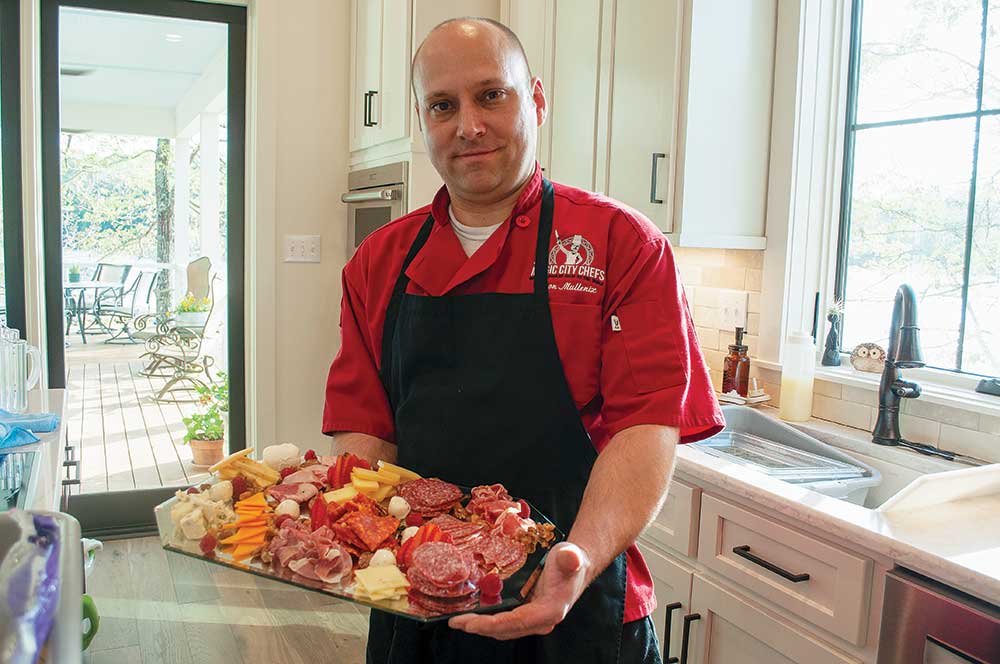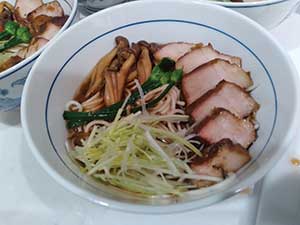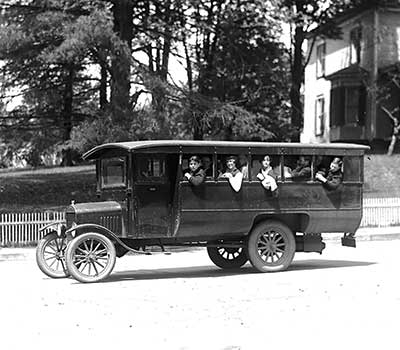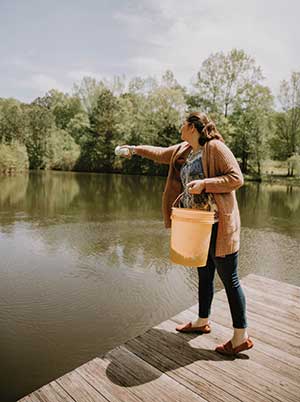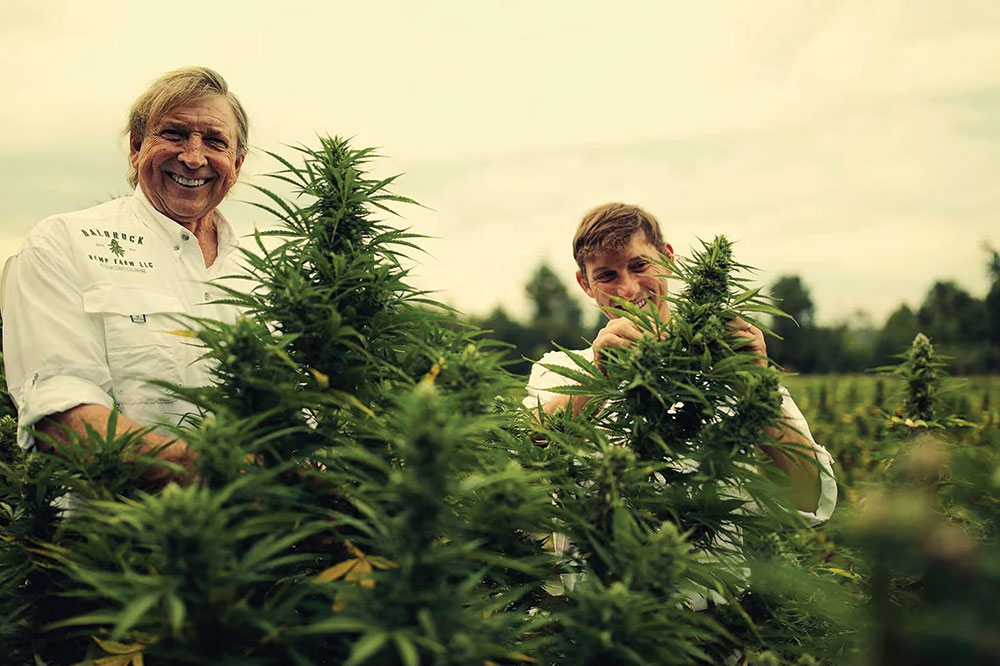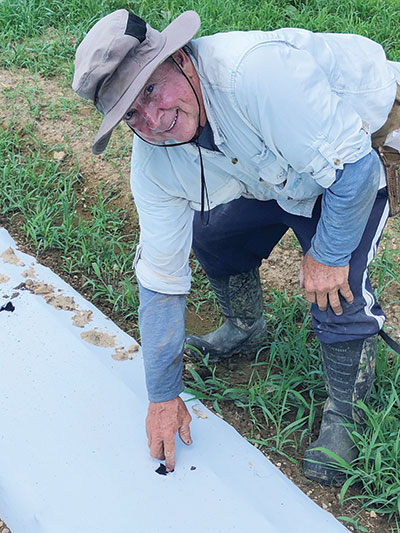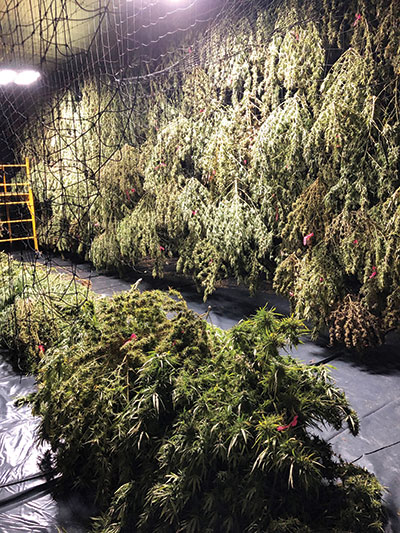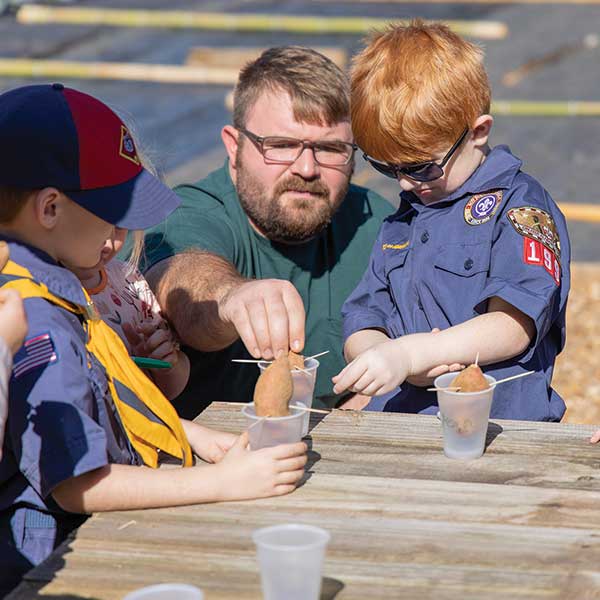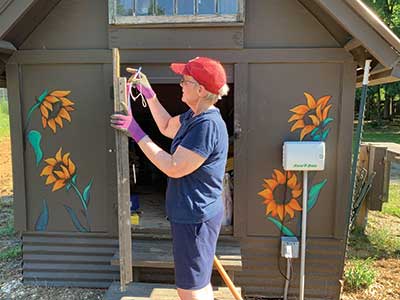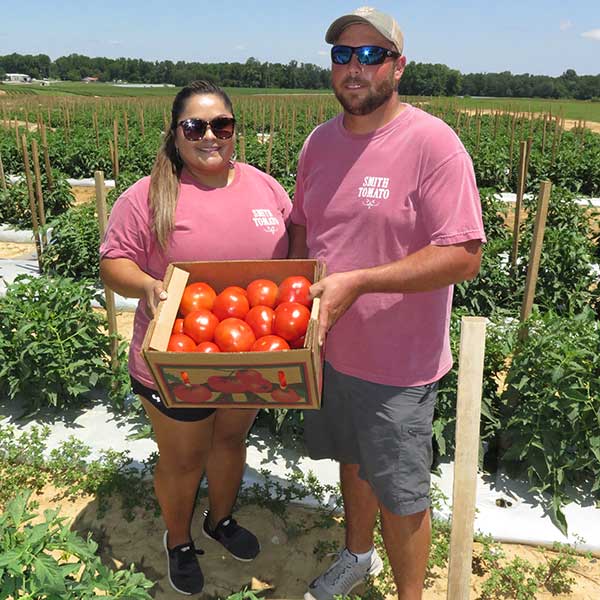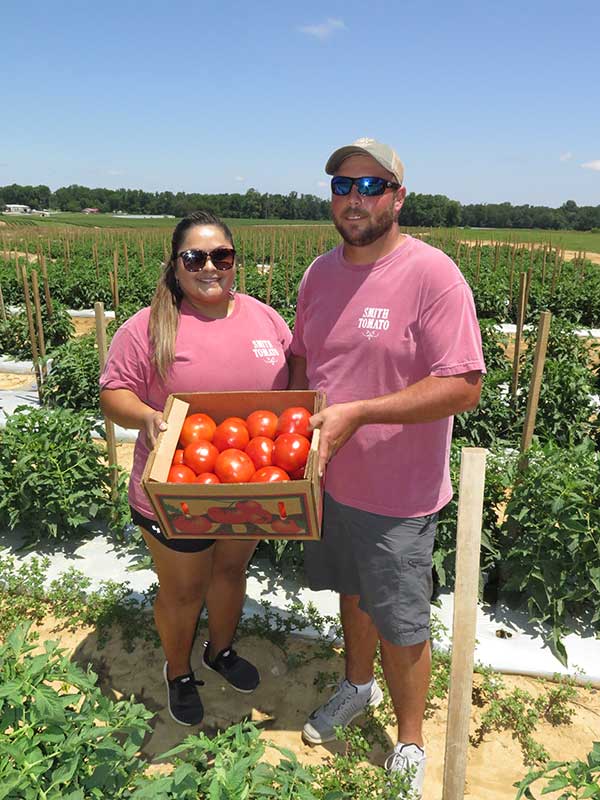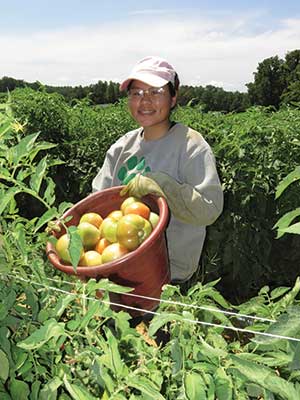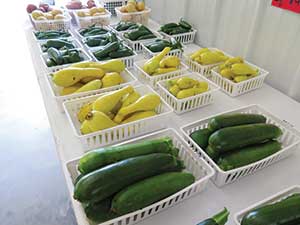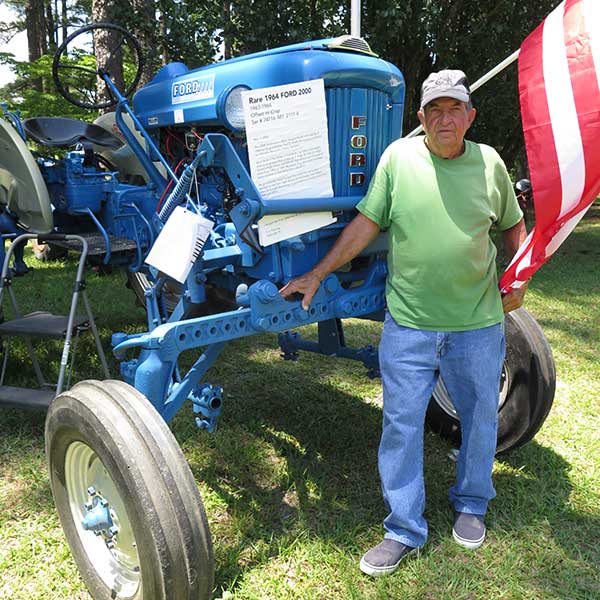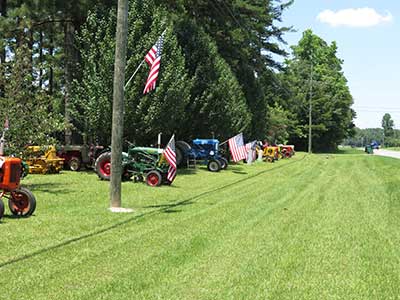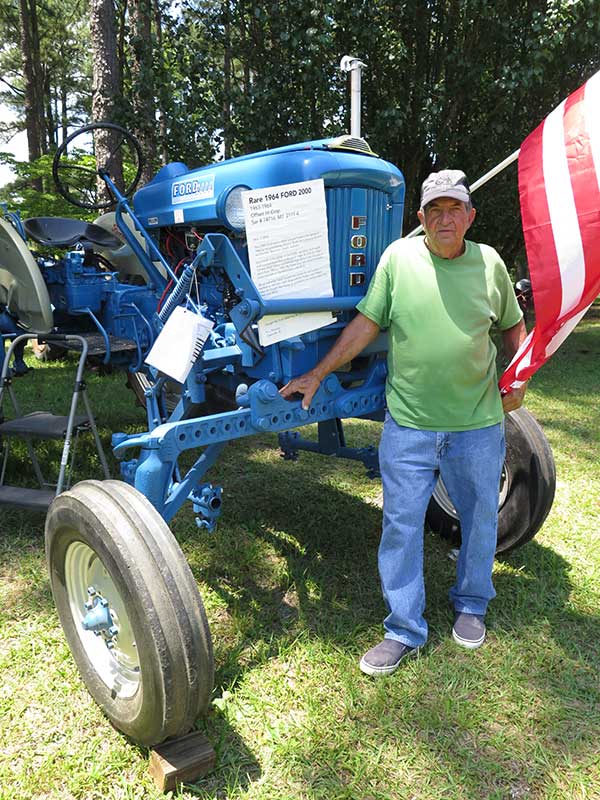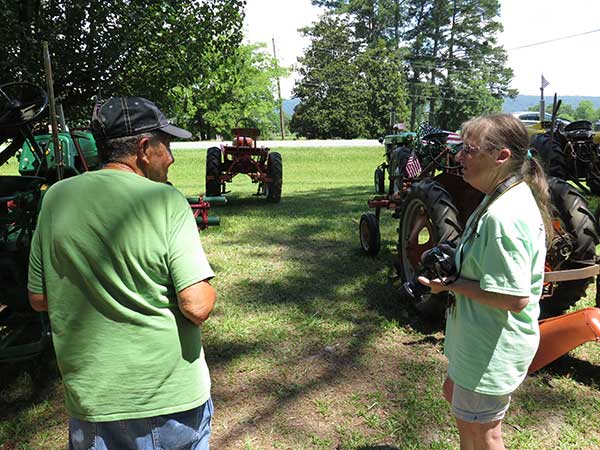Using talent to cook up something special & serve others
Story by Paul South
Photos by Mackenzie Free
Submitted Photos
On a sweltering June day, Jason Mullenix is at work in a steaming kitchen. While most, if not all of us, may only hear the clatter of pots and pans, Mullenix, the owner of St. Clair County-based The Magic City Chefs, choreographs a sweet and savory dance.
After just three years in business, The Magic City Chefs has a client base stretching from Atlanta to Birmingham to Smith Lake as he prepares gourmet lunches and dinners in the homes of his clients. Some want a daily lunch. Others may crave a gourmet dinner party for eight.
And Mullenix wants more than just pleased palates and stuffed tummies. He wants to turn back the clock and give back by bringing families back to the dinner table to talk, not text, make eye contact with each other instead of fixed stares at a smartphone screen.
“I noticed it in my own family, being a chef and working from sunup to sundown and most holidays,” he says. “I mean when families have Mother’s Day or something like that, they want to take them out to eat, you know, so that they don’t have to cook. It all falls back on the chef.”
For the culinary professional, which means missed family holidays, missed little league games, even lost chances to tell bedtime stories and give goodnight hugs. “It really dawned on me. We were all sitting around a table at a restaurant when I had a day off, and I looked across the table, and they were all on their phones, including my wife,” he says. And I’m like, there’s nothing to see on your phone. We all should be talking … I looked around the restaurant, and pretty much the same thing was going on at every table.”
He flashed back to the days when his mom cooked dinner, served at the dining room table, when families talked about their day’s triumphs and trials, laughed and kidded and became a family. Going out to eat was a rarity.
“It was more than just sitting there eating,” Mullenix says.
A 17-year culinary veteran, he was supervising a large institutional kitchen when the vision for The Magic City Chefs hit. For him, the joy of cooking had become nothing more than a book title.
“I was burned out,” he says. “The passion was gone. I was making great money, but I couldn’t enjoy it, and I couldn’t enjoy my family with it. I realized there were people out there who don’t have time to come home to cook a decent meal.”
He adds, “I wanted to do something different and find that passion again. If I can help somebody through the gifts that God has given me … If I can help people, I feel like I served my purpose.”
Genesis of a chef
Serving others and purpose are key ingredients in the The Magic City Chefs’ recipe, a process that began when Mullenix was in the Navy, serving first in the base store, then as a barber, then a launderer and three years as a chaplain’s assistant at the Singing River Island Naval Station in Pascagoula, Miss. His cooking interest flamed up when he ran the local observance of the National Prayer Breakfast.
While in the Navy, he took night courses in business administration, then went to culinary school. His first stop was as a baker at Panera Bread, working the night-owl shift. Then came restaurants, the University of Alabama (serving ESPN, the skyboxes at Bryant-Denny Stadium and Crimson Tide alumni) and other Capstone kitchens. He crafted not only pastries, but he learned the savory side of the culinary art.
Then came stops in Birmingham and Pell City. In the Magic City, he catered and cooked for events at the historic antebellum Arlington House. He cooked for dignitaries ranging from mayors to the Red Hat Ladies to Nicky Minaj, where the music superstar wanted everything from food to furniture in pink for a pre-concert party. The Real Housewives of Atlanta were also served during his six years at Arlington.
Of Minaj, Mullenix says, “She probably came in for like five seconds. We got stuck in an elevator for about an hour trying to leave because of security.”
He also worked for the firm that provided food service and vending for Honda in Lincoln. Then came another restaurant stop, followed by Birmingham-Southern College and a nursing home stint before the birth of The Magic City Chefs.
The service business cooks prepared meals in-house for clients – one a day – that takes six or seven hours, depending on their choices. Every week, clients get a new menu. A family of four can go six months without eating the same entrée twice, with a wide-ranging menu.
Weekends are reserved for dinner parties, from formal sit down to informal family-style or plated meals of four courses. Mullenix also supplies glassware, tableware, linens and menu cards. Everything is catered to the client. Prices vary depending on the menu, generally from $100-200 per person. A romantic four-course meal costs $300. Diners must provide any alcoholic beverages.
“The majority of anything local I’ve done is around Logan Martin Lake,” Mullenix says. “I haven’t had any prepared meal clients. Most of the clients I have during the week are in the Mountain Brook-Vestavia Hills area.”
One of his first clients, a nonagenarian in North Birmingham, gets meals delivered daily. Mullenix tries to use ingredients the clients have in-house.
There’s also a creative cake arm of the business – for weddings, birthdays, etc., – that sees brisk business from March to October. Among the most unusual wedding cake requests: a “Nightmare Before Christmas” wedding cake.
“It turned out pretty good,” Mullenix says.
While cooking for any number of diners – from a romantic dinner for two to a wedding reception for hundreds – is a pressure cooker, there is a silver lining.
“There’s a good stress about being in the kitchen; it’s not always bad,” Mullenix says. “When everything is going as it should, and you’re creating wonderful food, there’s a ballet about it that’s hard to describe unless you’ve been there.”
That dance includes shopping for the client’s dinner, setting the table, preparing the meal which features locally produced, farm-to-table ingredients.
And there’s still a dance, albeit alone, as he works in a client’s kitchen. It’s a pots-and-pans version of Billy Idol’s Dancing With Myself.
“I just put in my earbuds and do what I need to do,” Mullenix says.
Business is bubbling for The Magic City Chefs. And what’s more, Mullenix’s culinary passion has reignited, and he’s learning with every creation.
And, in keeping with his calling to help others, he’s cooked for temporary clients who need meals while going through physical therapy.
“It’s a lot more rewarding than cooking (in a restaurant) for a bunch of foodies.”
And Mullenix sees his calling and his vision – both that would make June Cleaver smile – families at the dinner table talking like the Mullenix family did long ago. Mullenix even does the dishes.
“That’s the most rewarding part,” he says, “actually seeing families able to do that.”
And at the end of the evening, Mullenix hasn’t only served great gourmet food. He’s given something even more precious.
“I don’t just sell great food,” he says. “I give back time.”











